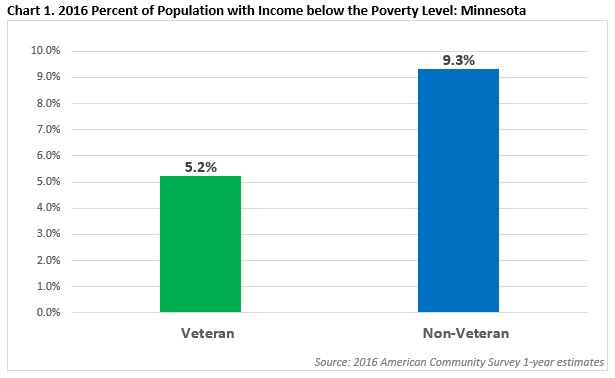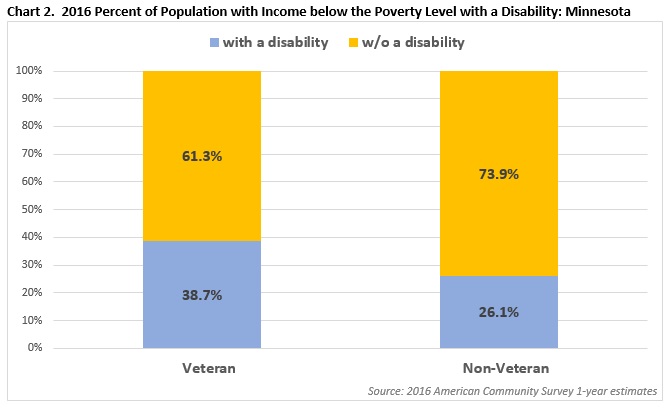 The presence of such industry powerhouses as Polaris, Arctic Cat and New Flyer make Northwest Minnesota a hub of transportation equipment manufacturing.
The presence of such industry powerhouses as Polaris, Arctic Cat and New Flyer make Northwest Minnesota a hub of transportation equipment manufacturing.
From wheat and potatoes to soybeans and sugar beets, the region is a major producer and processor of food staples and specialty agricultural products.
Want the freshest data delivered by email? Subscribe to our regional newsletters.
10/27/2017 12:04:56 PM
Chet Bodin
Veterans in Minnesota bring leadership and a variety of skills to the workforce and their communities. In 2016 there were about 311,000 veterans living in Minnesota, and like the population as a whole, a growing number from the baby boom generation are aging out of the workforce. About three-fourths of Minnesota veterans served before 1990, and less than 50 percent of all Minnesota veterans participate in the labor force today.
An aging population with changes in income can often be more vulnerable to poverty. However, veterans and their support networks appear to be managing the transition well. Only 5.2 percent of Minnesota veterans had income below the poverty level in 2016, four percent less than the general population (Chart 1). Any number of Minnesota veterans living in poverty is too many, but public and private support for veteran health care, education, and employment is addressing these challenges. In addition to the Minnesota Department of Veteran Affairs, organizations like the Minnesota Assistance Council for Veterans (MACV) and Beyond the Yellow Ribbon create a statewide network of support.

It's well documented that the physical and mental effects of serving in the military can extend well past a veteran's time in uniform. Veterans are over twice as likely as nonveterans to report a disability in Minnesota, and disability also appears to be prevalent among veterans living in poverty. Among veterans with income below the poverty level in 2016, nearly 40 percent reported having a disability (Chart 2). Not only does this create a long-term reliance on health care services for many veterans, it adds to employment challenges. Given that a large proportion of veterans are approaching retirement, the prevalence of disabilities among these veterans may be facilitating a faster exodus from the labor force.

When meeting a veteran, we are often inclined to thank them for their service and sacrifice. But sometimes more than words are needed to truly express our collective gratitude. Military service includes being away from home for an extended period of time, and veterans are asked to divert energy away from their family and civilian careers. For those returning to civilian life, the transition back can seem daunting.
Many business and workforce services focus on veterans with and without disabilities. In Northwest Minnesota, the Disabled American Veterans (DAV) has chapters in Bemidji, Brainerd, Crookston, Detroit Lakes, Fergus Falls, Little Falls, and Park Rapids. Bunker Labs Minneapolis provides entrepreneurial resources for veterans by veterans. And of course, DEED helps both veterans and people with disabilities all over the state get back to work. Ultimately, no veteran should be living in poverty. This Veterans Day make sure those in your community know what resources are available to help them live the life they deserve.
Contact Chet Bodin at chet.bodin@state.mn.us.